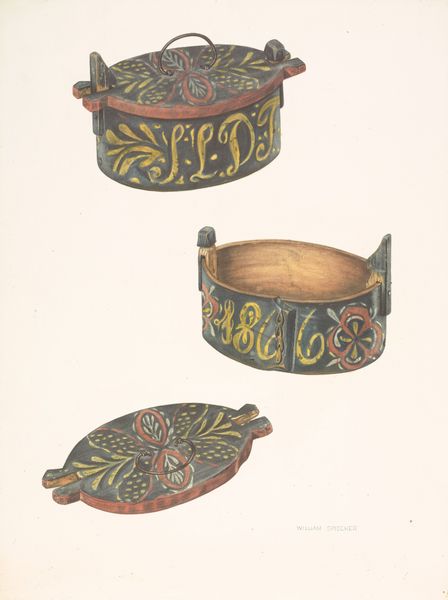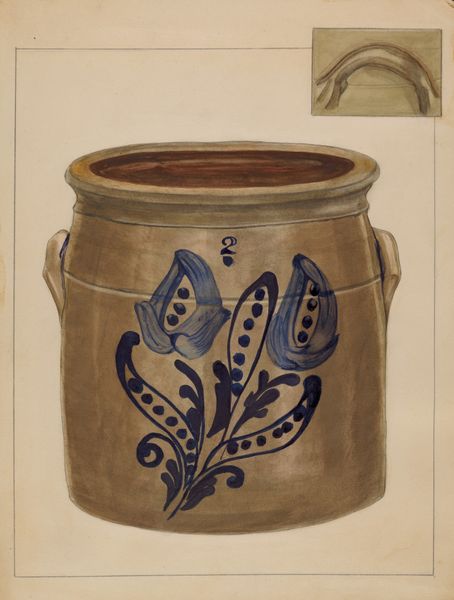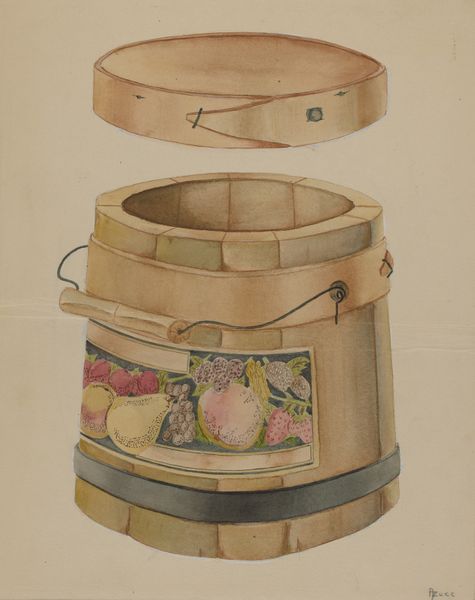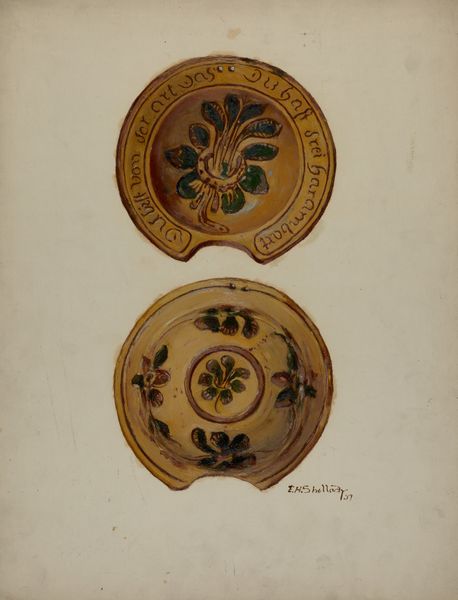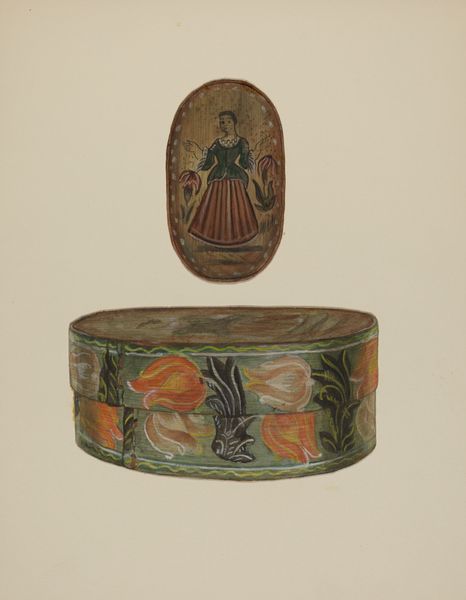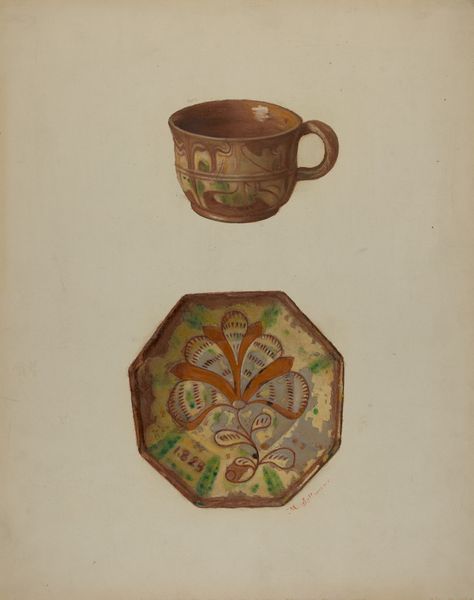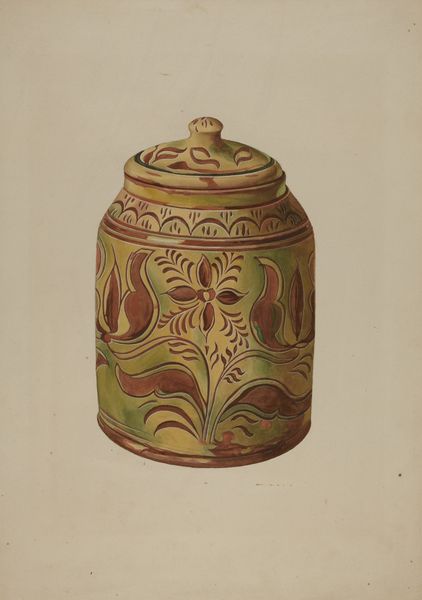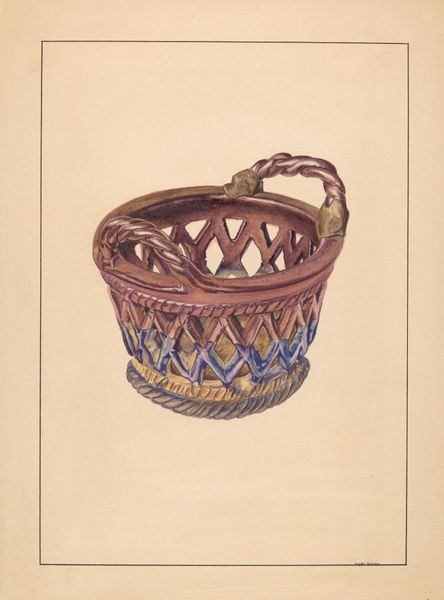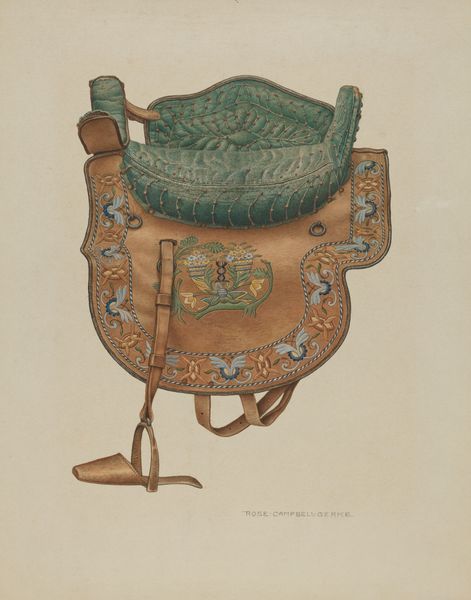
drawing, watercolor
#
drawing
#
caricature
#
oil painting
#
watercolor
#
coloured pencil
#
folk-art
#
watercolour illustration
#
decorative-art
#
watercolor
Dimensions: overall: 34.4 x 24.7 cm (13 9/16 x 9 3/4 in.) Original IAD Object: 3 1/2" high; 6 3/4" wide; 3 3/4" deep
Copyright: National Gallery of Art: CC0 1.0
Curator: Welcome! We're standing before "Butter Box," a watercolor and colored pencil drawing, dating circa 1953, by Harry Grossen. What are your initial thoughts? Editor: It's...charming, I suppose. The perspective is a little off, deliberately so? It gives it a whimsical, folk-arty feel. But look at how rudimentary the object rendering is: we're plainly viewing sketches for boxes! I want to know if those pigments were hand-ground or purchased from a shop. Curator: Indeed! Notice how Grossen captures the essence of the decorative arts movement. There's a delightful tension between the dark ground and the vibrant colored pencil work—those floral motifs and stylized lettering really pop, and lend to the work an overall pleasing balance of contrasting elements. The composition, arranged with careful asymmetry, offers an engaging viewing experience. Editor: I'm more intrigued by what isn't being explicitly shown here. Were these boxes made industrially, perhaps decorated en masse? The almost childlike application belies a more profound system, where tradition and craftsmanship become commodified for market and home display. Let's talk more about Grossen's technique. What can you tell us about their methods for material production? Curator: As far as technique goes, the visible layering of watercolor beneath the sharper colored pencil suggests a deliberate building up of tones. It gives the work an unexpected depth. You are also likely correct in spotting rudimentary methods. Editor: Depth and intent aren't separate. I'm stuck on the socio-economic elements embedded in art making... who commissioned this drawing and to what use were the plans put? That could be explored through social critique. The crude handling suggests it could be of working-class, artisan, even agricultural, origin. That information contextualizes this object—far removed from your 'balance of contrasting elements'! Curator: I see what you're saying. But beyond its possible origin as product sketches, "Butter Box" engages with deeper artistic principles. It's this formal push and pull, which makes it so compelling—even, perhaps especially, beyond our assumptions about who and where it came from. The image alone can communicate the essence of Grossen’s piece. Editor: Perhaps, but its resonance would not reach contemporary ears unless such background has been established. These historical markers show the distance and progress since Harry Grossen drafted them.
Comments
No comments
Be the first to comment and join the conversation on the ultimate creative platform.
